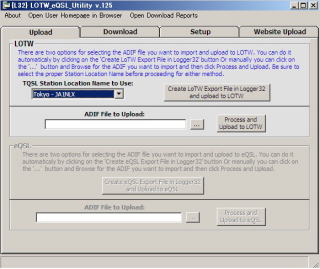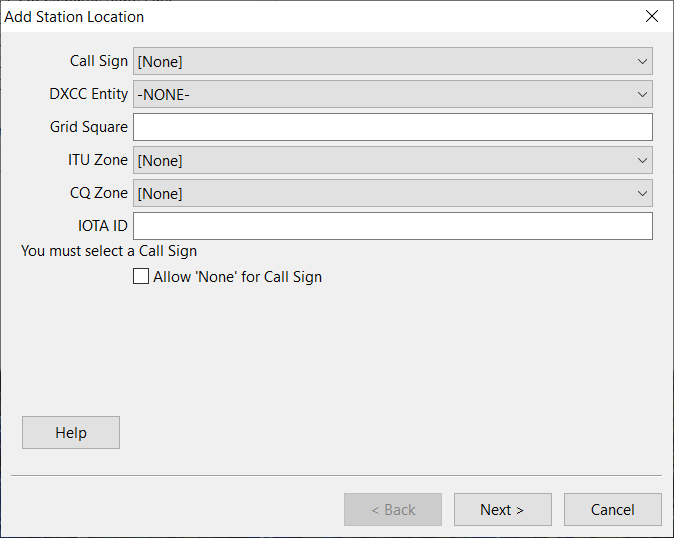
- #MACLOGGERDX TQSL LOCATION INSTALL#
- #MACLOGGERDX TQSL LOCATION MANUAL#
- #MACLOGGERDX TQSL LOCATION PORTABLE#
- #MACLOGGERDX TQSL LOCATION SOFTWARE#
Both can automatically upload contacts to LOTW, eQSL, and ClubLog. You can export between it and LOTW.įor general logging, e.g., tracking contacts across everything, I use n3fjp's AC Log (Windows, about $25 or you can buy his whole suite) and MacLoggerDX (Mac, about $100). I have a paid subscription to QRZ for its lookup service and some of the awards. (e.g., if I received a signal report but not RR73, I may not have necessarily logged it it'll show me if the other person did.) It's virtually unused for CW contacts. Some sites (ClubLog, QRZ, HRDLog) can import from LOTW.ĮQSL is primarily useful for digital modes because it will show you incoming incomplete contacts.
#MACLOGGERDX TQSL LOCATION SOFTWARE#
Every software package can upload to it & download confirmations from it. I would recommend setting up free accounts on LOTW, eQSL, QRZ, ClubLog and the others mentioned, but store your contacts in a software program of your choice. I used to proactively send QSL cards, but that got expensive with the amount of contacts I was making, so I keep it to new hams, CW students, etc. Another nice feature to be aware of is MacLogger/N3FJP can connect to your transceiver so that you don't have to fill out band and mode information when working a QSO. A nice feature of both MacLoggerDX and N3FJP is automated logging when you log in WSJT-X. I do a bunch of remote ops so being able to quickly tweak workflow for operation location is important for me and I can do this in one place - MacLoggerDX or N3FJP if you were a windows user.Įdit: I do log FT8 and other digital modes as I am chasing various LOTW awards. When I log in MacLogger, the log is automatically sent to QRZ, LOTW, and Clublog together with logging in its own database.Ĭontest logging is almost exclusively N1MM and I will then import into MacLoggerDX which will distribute out to QRZ, LOTW, and Clublog.Īs you can see from other posts, there are numerous workflows for logging. is also popular.įor general logging, I use MacloggerDX which has worked really well for me. I'm not a fan of QRZ but it is one of the best for callsign lookup and that is now the only service I pay for.
#MACLOGGERDX TQSL LOCATION PORTABLE#
I primarily operate portable for Parks on the Air so brevity is the key in my exchanges as I am frequently dealing with pileups. This is not legal advice but is my understanding of the best practices running an HF station portable. I primarily hear people using the “stroke region” system when they are using a club or special event callsign and there are multiple stations running the same sign at the same time. It’s a good idea to know your grid in the area you will be operating from as some operators may ask for it. General best practice is to say your callsign and then “portable” afterwards. My understanding is that the FCC eliminated the requirement to call your portable region when operating from away the home QTH. I would have to look into this but within LOG4OM you can operate multiple logs or just change your station and it will log all future contacts with that new callsign.
#MACLOGGERDX TQSL LOCATION INSTALL#
As an aside, make sure you set up a ham QTH account and sync that with your LOG4OM install as that will give you ~80% of the info QRZ will.

#MACLOGGERDX TQSL LOCATION MANUAL#
LOG4OM also supports flagging confirmed contacts within the software itself so you know if a contact was confined via QRZ, LOTW, or even manual QSL. Eventually I will likely pay for QRZ since they really have the best data set for license locations and what not.

My LOTW is synced with LOG4OM so that after I finish a session it prompts me with the usual TQSL prompts about location and confirming that the details are accurate.

What I do is use LOG4OM for all of my logging, once a month I export the past months contacts, and upload them to QRZ. Unfortunately there isn’t a great standard.


 0 kommentar(er)
0 kommentar(er)
